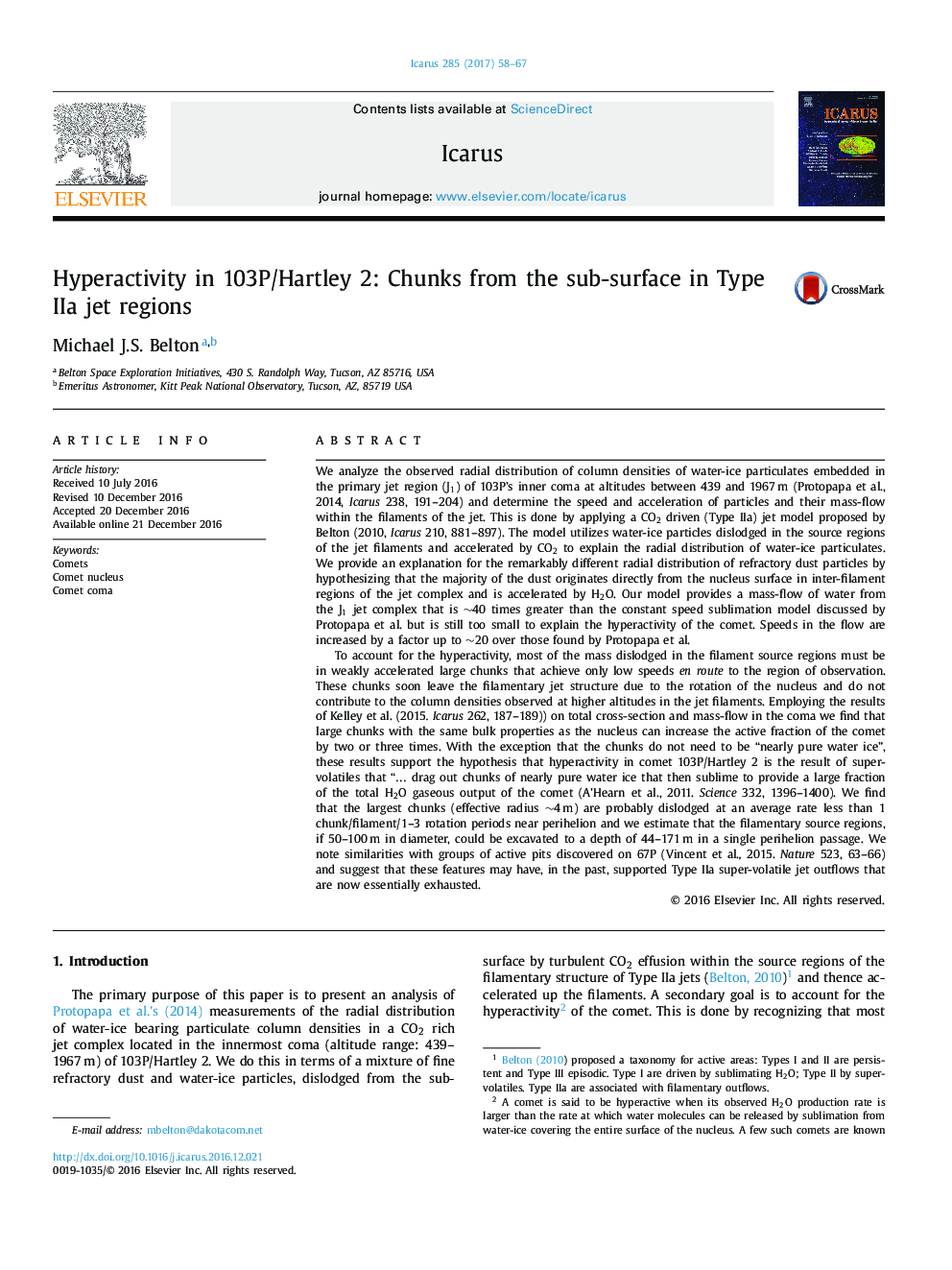| Article ID | Journal | Published Year | Pages | File Type |
|---|---|---|---|---|
| 5487054 | Icarus | 2017 | 10 Pages |
Abstract
To account for the hyperactivity, most of the mass dislodged in the filament source regions must be in weakly accelerated large chunks that achieve only low speeds en route to the region of observation. These chunks soon leave the filamentary jet structure due to the rotation of the nucleus and do not contribute to the column densities observed at higher altitudes in the jet filaments. Employing the results of Kelley et al. (2015. Icarus 262, 187-189)) on total cross-section and mass-flow in the coma we find that large chunks with the same bulk properties as the nucleus can increase the active fraction of the comet by two or three times. With the exception that the chunks do not need to be “nearly pure water ice”, these results support the hypothesis that hyperactivity in comet 103P/Hartley 2 is the result of super-volatiles that “⦠drag out chunks of nearly pure water ice that then sublime to provide a large fraction of the total H2O gaseous output of the comet (A'Hearn et al., 2011. Science 332, 1396-1400). We find that the largest chunks (effective radius â¼4 m) are probably dislodged at an average rate less than 1 chunk/filament/1-3 rotation periods near perihelion and we estimate that the filamentary source regions, if 50-100 m in diameter, could be excavated to a depth of 44-171 m in a single perihelion passage. We note similarities with groups of active pits discovered on 67P (Vincent et al., 2015. Nature 523, 63-66) and suggest that these features may have, in the past, supported Type IIa super-volatile jet outflows that are now essentially exhausted.
Keywords
Related Topics
Physical Sciences and Engineering
Earth and Planetary Sciences
Space and Planetary Science
Authors
Michael J.S. Belton,
